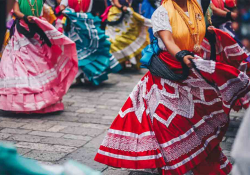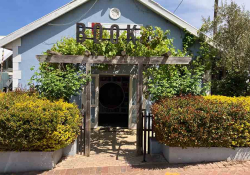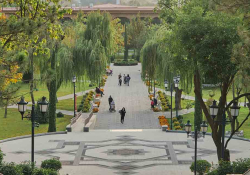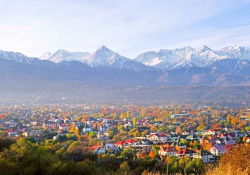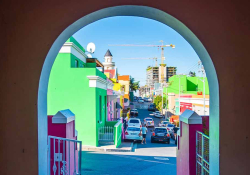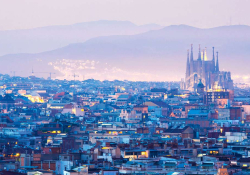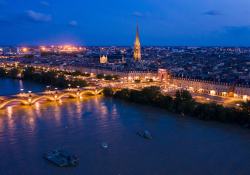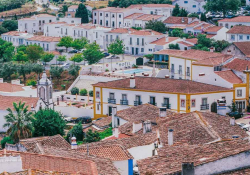Values Created in the Street: The Street Art of Chile
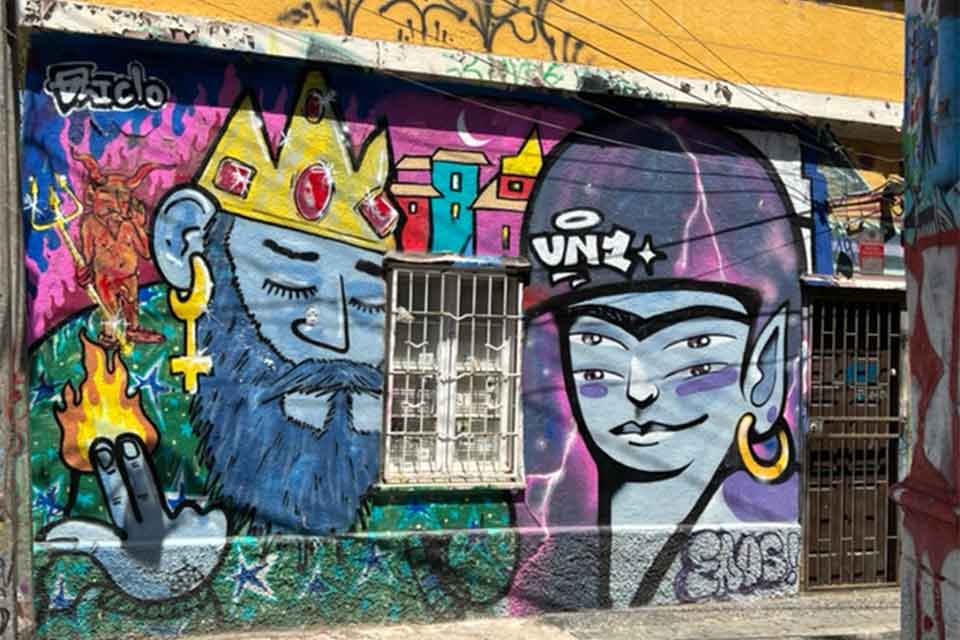
It’s a long way from Manhattan Island to King George Island—actually, it’s an epic trip from anywhere to Antarctica—and the wise traveler needs to make a stop, preferably at an interesting halfway point. In my case, that stop was in Santiago, the capital of Chile. A little over five thousand miles from New York, Santiago is actually two-thirds of the way to Antarctica, but only an overnight flight from JFK airport.
I don’t know what I was expecting of Santiago, certainly some skyscrapers and large hotels, and perhaps a few older neighborhoods that feature coffee and wine bars near art galleries. For the most part, I got that right, but most unexpectedly I found, almost at every turn in the more historic neighborhoods, fabulous street art. When a New Yorker thinks of graffiti, what comes to mind is spray-painted names on subway cars and trestles, the infamous TAKI 183, or maybe early Keith Haring or Basquiat. But what stopped me in my tracks while wandering through Santiago, and later during a day trip to Valparaíso, were imaginative drawings and paintings, often incorporating the architecture.
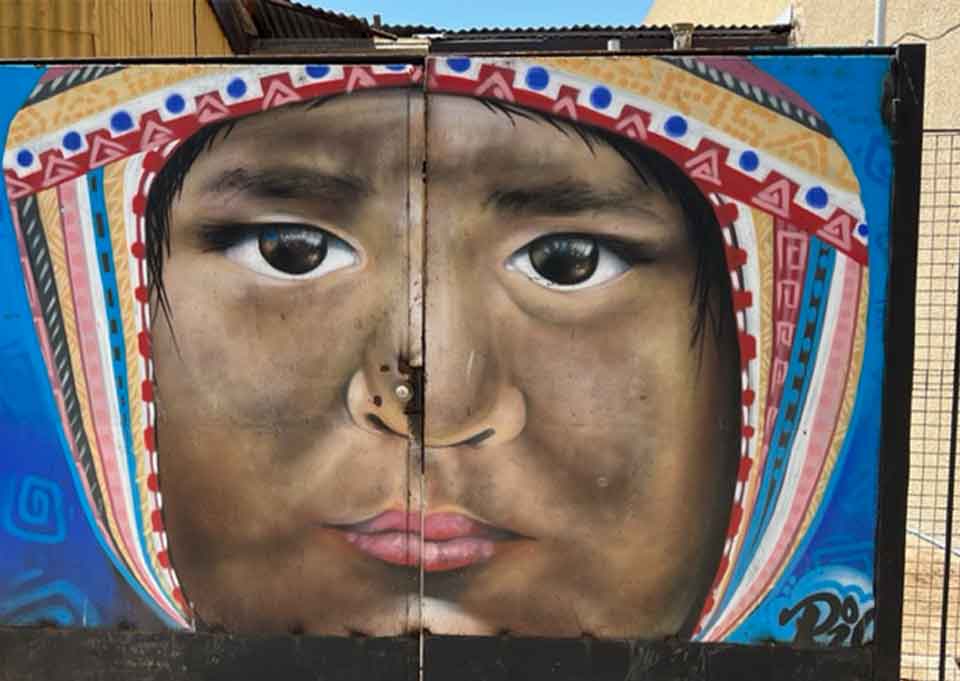
Most unexpectedly I found, almost at every turn in the more historic neighborhoods, fabulous street art.
Juan, our walking-tour guide in Santiago, was happy to fill me in. It turns out that street art in Chile has a political history dating back at least to the 1970s, when hundreds of protest murals appeared in public places to oppose the military rule of General Augusto Pinochet. Often those images featured the ousted socialist president Salvador Allende and the Nobel Prize–winning poet, politician, and diplomat Pablo Neruda, who was a close advisor to Allende.
More recently, in October 2019, there was another eruption of street protests, and more walls were covered with art and protest slogans. Thousands gathered in the Plaza de la Dignidad (Dignity Square) to protest and then march through the streets. In February 2020 Sebastián Cuevas Vergara, an architect and street art expert who teaches a class on the subject in the Faculty of Architecture and Urbanism at the University of Chile, told StreetArtNYC.org, “Values are created in the streets, and graffiti is a participatory process that reflects these values. One of the most important values that came out of these protests is dignity.”
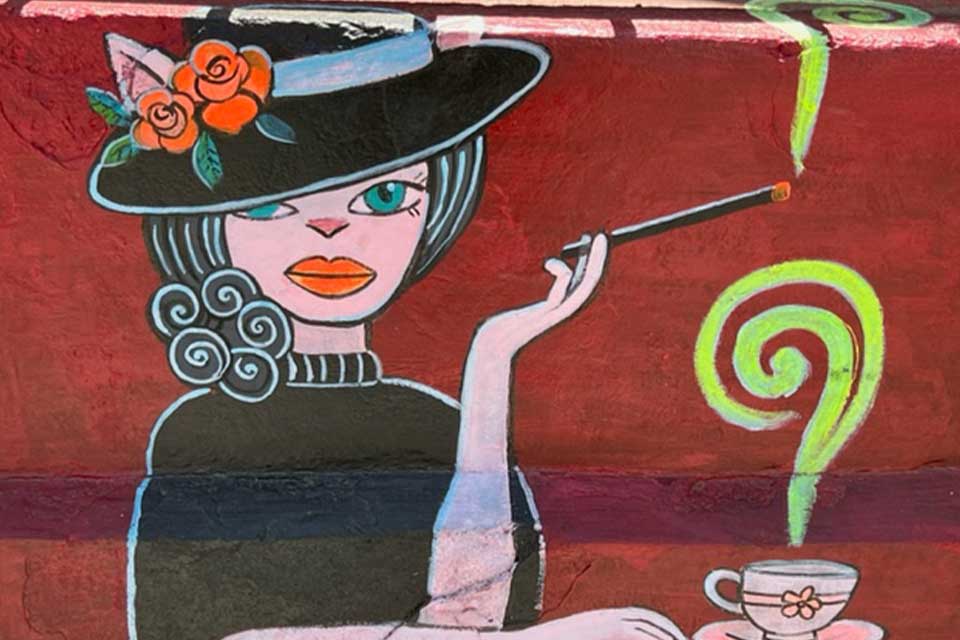
Wandering with Juan through the Bellavista, Lastarria, and downtown Mercado Central areas, I saw a wide variety of wall art, from Indigenous faces to cartoons to restaurant advertisements. My Spanish and my knowledge of Chilean political movements was not good enough to read the protest language, but the images were intriguing, nevertheless. The black-and-white, larger-than-life image of Frank Sinatra outside of the Sinatra Restobar was a sure draw for passersby. But it’s not that unusual to see an image of a pop culture icon writ large on a street or billboard. More arresting was a Guernica-like black-and-white image of a woman growing flowers and large buildings out of her body. And then, outside of Neruda’s home in Santiago, the blue theme of the house was extended to surrounding walls in both cartoon images and almost surreal abstracts. I could have been looking at a Giorgio de Chirico painting of steps, an eye, a boat, and a chess piece. Nearby, around the corner, was a twelve-foot-round magenta face of a woman in a yellow circle—it was cartoonlike but full of life and allusions to Indigenous cultures.
The vibrant colors and images, which so intrigued me, motivated me to take a day trip to Valparaíso, another center for Chilean street art. A seaside port—which fascinated James McNeill Whistler—Valpo, as the locals call it, is well known for its fabulous painted houses as well as walls filled with soulful faces and representations of folkloric or local customs.
On the front of one house, a dramatically beautiful dark-haired woman is painted between the upper windows and down to the door. She has a huge snake in hues of blue, violet, orange, and yellow wound around her shoulders leading to a front door echoing the blue of the snake. In her raised hand, she is holding a leafy and budding twig. The exhilarating drama of her image causes the architecture of the house itself to fade away. I am certain she is magical and offering a cure or potion.
Then I come to a large violet wall overlooking a street of small houses. A painting at least twenty feet high features a solitary young man with a topknot and wearing a snake for a necklace. He is holding a clear bowl with a narrow neck, and in it a stone tower with a pennant flag is on fire and appears to be sinking. His multicolored piebald face is calm and seems to be pleased with the end of what is perhaps a ruling authority that is going down. I am, of course, reading this as I would a poem, for I have no inkling as to the real meaning of the iconography. If there were someone to ask, I would, but it doesn’t matter because the image is engaging and provocative even without a Baedeker.
It’s lovely to imagine that street art without explicit political content signals less discontent.
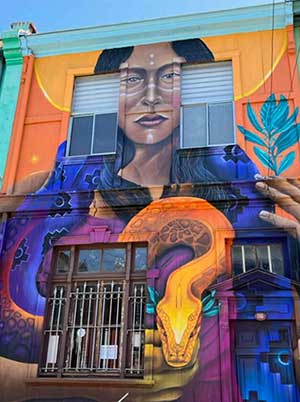 Throughout Valparaíso, the sides of buildings are filled with kings and sorceresses, stylish women having coffee, luscious lips, including one biting a ripe cherry, and smallish buildings tattooed with endless drawings, words, and graphic designs.
Throughout Valparaíso, the sides of buildings are filled with kings and sorceresses, stylish women having coffee, luscious lips, including one biting a ripe cherry, and smallish buildings tattooed with endless drawings, words, and graphic designs.
There is even a sweet guitarist in sunglasses with a glass of wine at his feet seen through what appears to be an accordion screen of light and shade. Very few are noticeably signed, but one lovely image of an Indigenous girl adorned on either side of her face with one green flower and one yellow is signed @LAARI.ART. Though I tried to track the signature down, I couldn’t find the artist. After a while, I knew I couldn’t record every image, so I stopped pointing my camera and just gazed long enough to carry away mental images.
Historically, Chileans have taken to the streets to express themselves in repressive times, and it’s lovely to imagine that street art without explicit political content signals less discontent. But a tourist, no matter how much preparation she does, is rarely well enough informed to understand all that she is seeing, especially about the political nuances in cultural artifacts. Whether these images signal better times or not, Santiago and Valparaíso deliver street art delights to every city walker, and it is undeniably wondrous to come upon such unexpected beauty.
New York City

